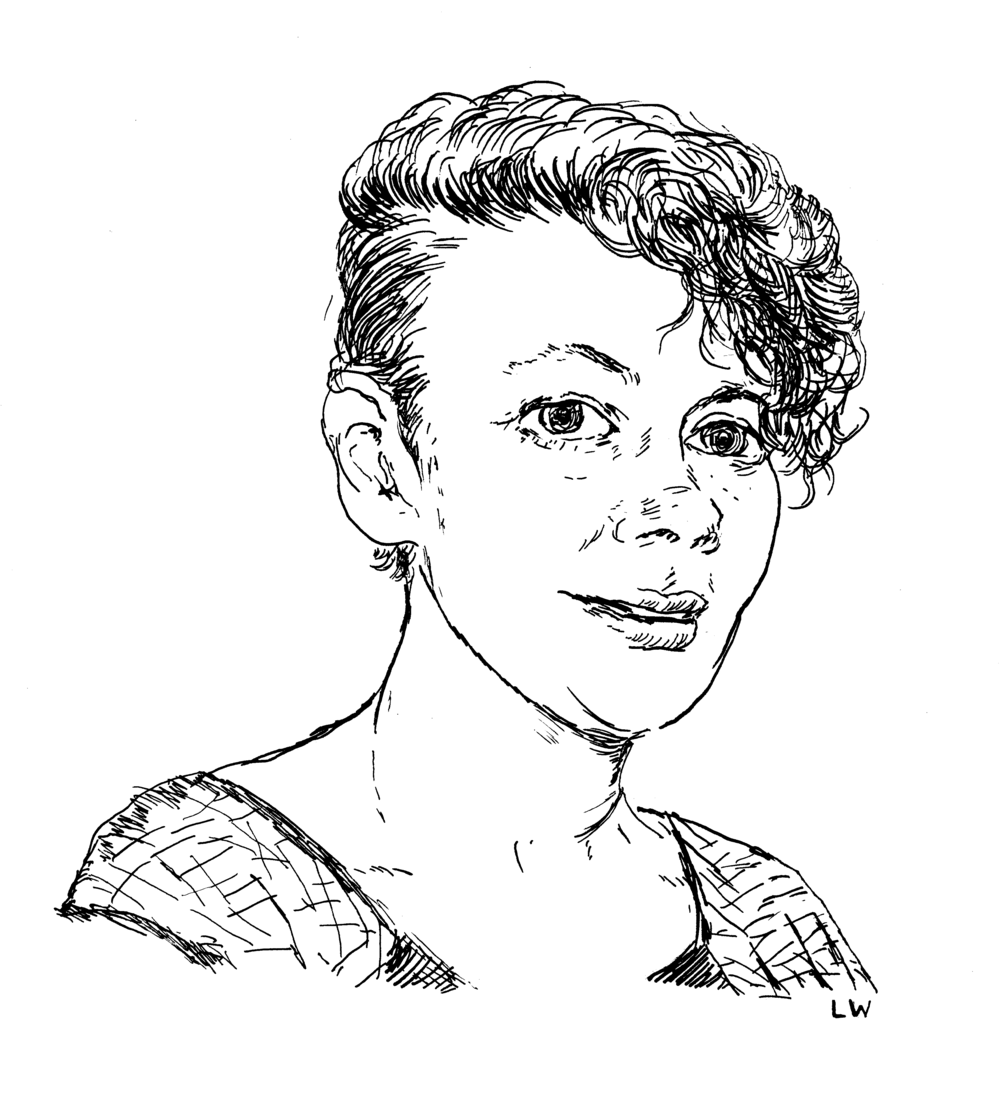
“Good ideas come from all sorts of places, and the minute we limit ourselves to only our own tastes, we shut off any number of interesting writers, interesting subjects.”
Ways That Editors Can Tell a Story:
Polyphonic choices
Through juxtaposition
Being adventurous
Sometimes the most interesting people in our literary culture are ones you never hear from, because they work behind the scenes. As an editor and critic, Nicole Rudick has quietly accomplished some very cool, critical things for almost two decades—first at Bookforum, later as managing editor of The Paris Review. So when the departure of PR editor Lorin Stein found Rudick suddenly at the magazine’s helm, and when she proceeded to use this opportunity to put together 2018’s extraordinary Spring and Summer issues, I, a longtime fan, decided to interview her about it.
We spoke for about an hour in the PR offices in late May of this year. The Summer issue was printed but not yet on newsstands. If we didn’t talk much about the circumstances of Lorin Stein’s departure, or the future of the magazine and Nicole’s own resignation, it’s not because those things aren’t worth talking about, but because my focus was on Nicole’s work at the Review and the two issues she’s edited: the thinking behind them, and the vision of literature they represent.
—Martin Riker
I. An Education
THE BELIEVER: In my personal history of you, you first appear in the offices of Bookforum, sometime in the aughts, where I couldn’t help but notice your interest in marginalized and experimental writers nobody else would give the time of day. But I have to assume you had a life before that. Were you a book kid? Were you an art kid?
NICOLE RUDICK: I grew up in Denton, TX, just north of Dallas-Fort Worth. It’s a college town with a strong arts presence, but it still had a small-town feel. My parents were both college professors, both cell biologists, but they are big readers outside of the sciences. There were always lots of books in the house. My grandmother was an Anglophile—she visited England every year and would bring me back programs and posters from the museums and galleries there. And my mother’s office was across the street from the museums in Fort Worth. I went to the Kimbell a lot as a kid—it was my favorite museum growing up and is still one of my favorite small museums. I remember seeing the Barnes Collection there, and a show of Jain art from India.
BLVR: What kinds of stuff did you read?
NR: I grew up riding horses, and was generally horse-obsessed, so I read every horse book there was. Later, I got into Dick Francis’s horse racing crime books, and in junior high I discovered Terry Brooks’s fantasy novels. But I was also reading more traditional stuff and read constantly—all of Jane Austen, The Scarlet Pimpernel, Moby-Dick, the Brontës, especially Wuthering Heights, which I loved and kept on my nightstand.
But then with my dad, I was watching a lot of weird late-night television—classic Doctor Who, British sitcoms like Blackadder and Are You Being Served?, and grade-Z monster movies. That was a separate education.
BLVR: You studied literature in college?
NR: I always knew I wanted to study literature, yes, but it also sort of blinded me to other offerings. It didn’t occur to me that you could study art, so I didn’t get into art history until midway through college. And the literature offerings were fairly traditional, nothing that really expanded what I was already aware of. When we interview interns now, I’m amazed at the classes they get to take—so contemporary and multidisciplinary. I’m really jealous. The connections that they’re getting within a single course took me years to make on my own.
I liked the way art history was taught—it was not a theory-heavy department. We read primary sources, which I feel served me well in the long term. The work comes first, and everything else is secondary. But when I ended up doing a Master’s at Columbia in art history, it was all theory, and I was completely left in the dust.
BLVR: But you didn’t run into experimental—I’ll use that word—work until you’d moved to New York.
NR: Even a while after that. And when I did finally run into this kind of writing—I remember reading Gravity’s Rainbow, because my friends had read it—it felt like being tuned into a different station. Though even still, it was a slow realization that this was the thing I had been looking for my whole life without realizing I was looking for it. Reading Gary Panter’s Jimbo in Paradise was another huge moment for me.
BLVR: You’ve written on artists who use text, like Etel Adnan and Brian Chippendale, and you’ve written on writers who use art, like Karen Green in Bough Down or Gert Hofmann’s ekphrastic The Parable of the Blind. What is it about the overlap of visual and textual that interests you? In particular I wonder whether your interest in work that transgresses boundaries comes from the fact that you have this mixed background of visual and textual, or the opposite way around.
NR: I think it must be the former. I feel that I’ve come to understand my own interests slowly, over a long period of time. I’m a little jealous of people who come to realize these things earlier on because it seems they have a greater span of time to investigate them. For me it’s been this long realization, and I’m sure that my interest in the combination of text and visual work has fed my disinterest in neat categories. They’re a convenient way to talk about certain things, and to ignore others, to exclude them.
BLVR: Back to our timeline: you received your master’s in art history from Columbia and from there you got to Bookforum.
NR: I graduated in May of 2001 and started looking for work. I actually had an interview with a gallery on September 11, which of course didn’t occur, and everything was really up in the air for several months after that. I was finally hired at Artforum and Bookforum simultaneously in January of 2002, as an editorial assistant. I worked my way up to managing editor of Bookforum and was there for close to eight years.
BLVR: Then the job came up at The Paris Review?
NR: I left Bookforum and freelanced for a year and knew the Review’s outgoing managing editor. She contacted me and asked if I was looking for something permanent. That was nearly eight years ago.
BLVR: And the whole time you were here Lorin Stein was the editor?
NR: My first day on the job was when his first issue was being printed.
BLVR: Before we talk about these two issues you’ve made as editor, I wanted to ask briefly about your thoughts—I’ll use the word philosophy—about editing literary magazines. What determines or should determine the vision of a magazine? To what extent should an editor dictate the vision of the magazine versus delegating the editorial vision—to colleagues, to readers?
NR: A magazine has to have a strong editorial vision. Otherwise, there’s little sense of what it’s about, what it aims to do. A vision gives reason to selections, gives shape to each issue, helps draw different pieces together while also allowing them to have distinct voices. But a vision doesn’t have to be narrow, and an editor doesn’t need to be dictatorial in enforcing that vision. My philosophy, I suppose, is that good ideas come from all sorts of places, and the minute we limit ourselves to only our own tastes, we shut off any number of interesting writers, interesting subjects. I don’t want to miss out on something because I’m caught up in my own perceived brilliance.
I also think some editorial choices should be a little risky. Not all will be successful, but taking chances helps move the conversation further. A magazine shouldn’t simply be publishing what readers say they want to read, or think they want to read—you’ll all end up just sort of mulling around in the same pond. I remember assigning a review at Bookforum of a book on British computer art of the 80s and one of the publishers saying, “But who would be interested in that?” And my response was, I don’t know but somebody is, and aren’t you the least bit curious? If we all just read books that tell us what we already know or what we already feel, that reflect ourselves back to us, then what’s the point? That’s not why I read.
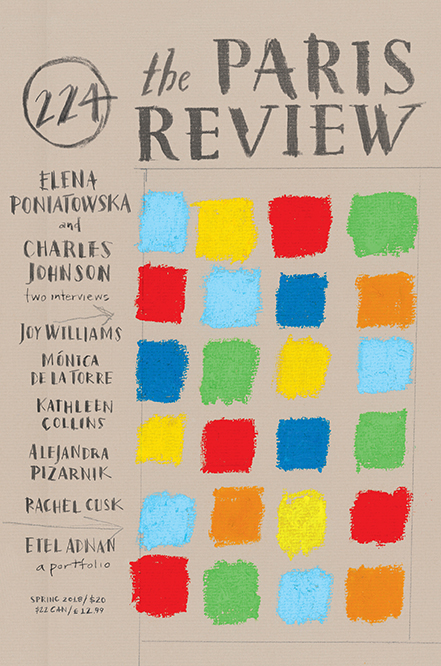
II. Editorial Vision
BLVR: One day you find out you’ll be taking over the reins, for a while anyway, of The Paris Review. I assume this news came to you somewhat suddenly?
NR: I suppose so. That was a very weird period. The lead-up to it was awful actually. But then coming together with the rest of the staff and feeling freed up—it was exhilarating. Everyone just got to work, though it took a little bit of time to settle into the reality of it.
BLVR: What were your goals going into this Spring issue?
NR: Getting it done. I mean, there was so much work to do and so little time to do it. There was also the podcast and our new imprint, Paris Review Editions. And I’ve been doing two jobs for the past six months.
BLVR: What do you mean?
NR: I’ve been managing editor and editor, and we have a tiny staff. The full-time editorial staff for the Spring and Summer issues was me, our associate editor Caitlin Youngquist, and three interns. It was exciting—I don’t want to imply that it wasn’t. The funny thing about taking over a magazine, and this would be true for anybody, is that you’re not able to show immediately what your ideal magazine looks like because change happens over multiple issues. You can’t make it happen all at once. That said, there were things I wanted to make sure did happen in that first issue. One was representation. I wanted there to be more women than there had been in the past. I also wanted there to be a greater diversity of writers, not just in terms of race and gender but stylistically and aesthetically, in the kinds of stories and in the voices they were using to tell them.
BLVR: Another sort of diversity that I think is notable in these issues is age. There’s a great expanse of early writers and others right at the end of their careers.
NR: That came to greater fruition in the Summer issue. But we had an interview with Elena Poniatowska that had been sitting around for years, and this seemed the exact right moment to put her in. The Review isn’t a political publication, but my feeling after Trump’s election was that if a lot of people were about to lose their voices politically and socially, then we ought to make sure they could be heard, in some way, in the magazine. Poniatowska’s literary focus is on marginalized people, poor people. And we had a wonderful interview with Charles Johnson, who writes a kind of multigenre philosophical fiction about black experiences, an approach to writing the Review hadn’t represented in a long time.
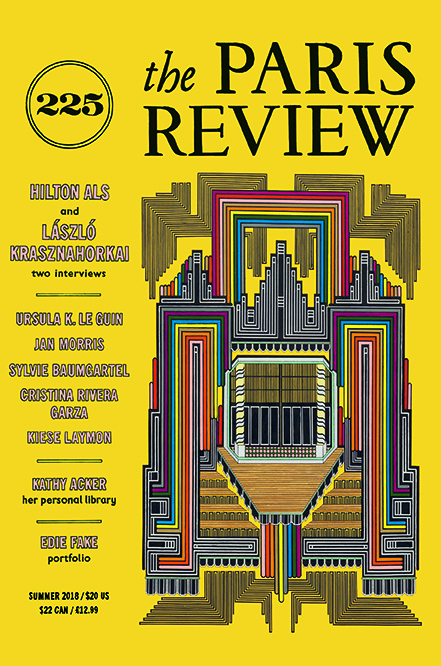
BLVR: The Spring issue, which is the smaller of the two, is composed very tightly, almost like a poem. Everything seems to belong, and I wasn’t sure how much of the material you would have inherited, but you made it all feel of a piece.
NR: I did inherit some pieces for the Spring issue, and then we found several more on our own. We ended up publishing seven pieces of fiction, which is a lot for one issue, though some of them are quite short. We read a lot of submissions. The ones that appealed were stories by women, and I can’t say that we set out to have an all-woman issue, at least as far as fiction goes, but that’s what happened—they were the ones that felt most exciting to me. And I love that it came out that way. They’re all wonderful stories, but also it’s a kind of middle finger to the people who say that there isn’t a lot of great writing by women.
A couple years ago, I commissioned three comics adaptations for the website—two were by women and one was by a man. As soon as we published them, I started getting pitches and submissions by other comics artists, and they were all men. I think generally that men send in pitches and stories far more than women do—though I see this changing. But it’s part of an editor’s job to go and look for things, to hunt them down and not just to wait for them to come to you.
BLVR: That makes a lot of sense to me. When Danielle and I were starting Dorothy, a publishing project, it was never about excluding men and not publishing them, it was about creating a space where women felt encouraged to send their work. But Danielle had made a similar observation at her previous publishing job—that women just weren’t sending in their work in the same numbers, and she thought if we created a space where women felt welcome, we would get a lot of interesting stuff.
NR: Otherwise it becomes a self-fulfilling prophecy, where you’re publishing certain kinds of writers or certain kinds of work, and writers who aren’t in those categories don’t feel welcome and so don’t send anything.
BLVR: One of the high points of the Spring issue for me was the new posthumous work by Kathleen Collins, whose Whatever Happened to Interracial Love? I taught this past semester. I’d thought when I was teaching it that that was all the work there was, so I was excited to see this. Then I was struck by how different the story in the issue is from the ones in that collection. It’s more modernist in style; it has a totally different sort of power and energy. How did that piece come about?
NR: I’d liked her book, particularly the way her stories don’t feel exclusive to the domain of the short story—they are also filmic and visual, never just words on a page. On a whim I wrote to her agent to see if there was anything else, and there was. It’s different from the stuff in her first collection, but I liked it immediately. It has a visceral energy wrapped in a haze of emotion and memory. I knew immediately that I wanted it in the issue.
BLVR: The other piece I wanted to ask specifically about is the Etel Adnan portfolio, which you curated and wrote a lovely essay for. Adnan brings together the visual and the textual as meaningfully as anyone, and so seems like an artist for whom you’d have natural affinities. Did you have that in the works for a while, or was it more like, Here’s my chance. I’m going to go get that portfolio of Etel Adnan.
NR: I’d thought about it in November or December of last year. Her work is irresistible—it’s vivid and energetic and joyful. I didn’t know how many fans she has until we published that portfolio, and then everybody had a story of how they’d seen one of her paintings or a show of her work once and maybe didn’t know who she was but were smitten with what they’d seen. She’s enormously prolific, and once I started looking for work to include, I couldn’t stop. Part of the problem was having to pick only a few.
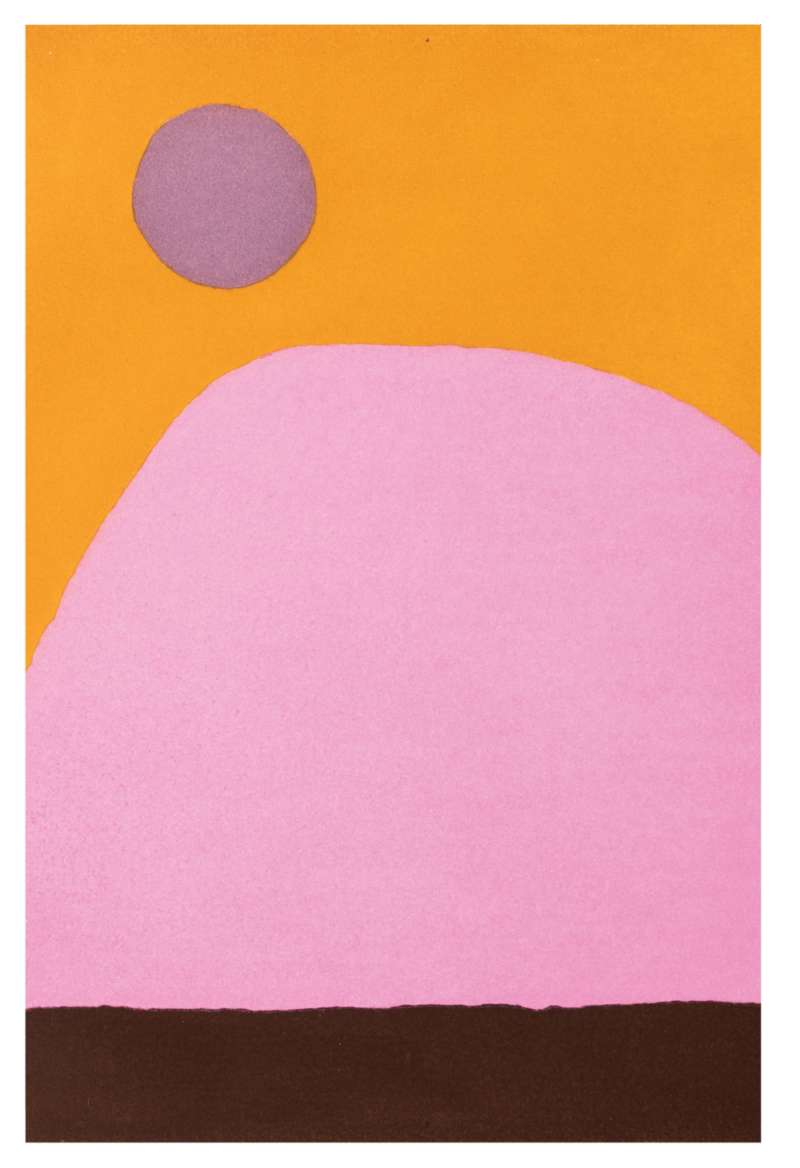
BLVR: You selected the work for the portfolio?
NR: I did. And she’s produced so much work and has galleries all over the world, so I ended up contacting something like five different galleries, from Lebanon to California, trying to get more and more of the work, to show the variety. Which isn’t normally the case with our portfolios, it’s more like one or two places. Then I wrote to her directly to ask if she would be interested in making something for the cover, and she sent back the colored squares, with the pencil marks showing us where we would place it in our cover template. Our designer left them in. I’m so glad she did.
BLVR: It’s the first-ever work by an Arab artist on a Paris Review cover?
NR: Yes, I think so.
BLVR: Maybe it’s a result of the combination of the cover and the portfolio in the middle, but the Adnan work really serves, for me, as an organizing force, with all the other work sort of gravitating around it. That’s a large part of where I get that feeling of coherence for this particular issue.
NR: That’s interesting. Why do you think that is?
BLVR: Maybe it’s simply because I found that portfolio so powerful, and it’s right there in the middle in beautiful color spreads, and it sort of infects everything around it, and it all comes together in that way.
Which is a little different from how the Summer issue feels, so let me ask you about the Summer issue. It’s bigger. For me it doesn’t have the same centered feeling. If the Spring issue is like a poem in its organization, the Summer issue feels more like your editorial novel. It branches out in different directions and it pulls all sorts of forces together into one space. Had your editorial thinking, or just the editorial circumstances, changed between issues?
NR: If I’d had another issue, the Summer issue would have been smaller. There were so many things I was excited about having, and I didn’t want to part with any of them. I know full well that that’s a weakness of editorial vision, but at the same time, at a certain point I knew it was the last chance I would have to shape an issue of the Review at that level. And there were certain arguments, for lack of a better word, that I wanted to make before I no longer had the chance to make them.
BLVR: Such as?
NR: Broadly speaking, the idea that literature is a larger field than is typically acknowledged, that it encompasses a greater variety of voices, approaches, and subjects than have been allowed.
BLVR: You say it’s a weakness of editorial vision. I would say, rather, that in the Spring issue you have a very tight aesthetic, whereas in the Summer issue you have what I would call a carnival aesthetic, in the Bakhtin sense of the carnivalesque. All the different voices coming in.
NR: When you have two stories that are very similar, they lose a certain vitality. I like the frisson produced by putting two very different pieces next to each other—there’s a way in which their unique qualities are accentuated by their differences but you can also see that the large well from which they draw is the same. This is an idea that comes through in the Writers at Work interviews—no matter the approach or process or genre, it’s all a kind of storytelling and a matter of craft.
III. Art Objects
BLVR: We talked a little with the Spring issue about diversity—of age, race, aesthetics, nationality, sexual orientation. That diversity is certainly on display in the Summer issue, and also a few more men have found their way into the issue.
NR: A few more men.
BLVR: Particular highlights for me were the feature on Kathy Acker’s library and the portfolio on Edie Fake, whose cover art you’ve mentioned is the first cover by a trans artist to appear on The Paris Review. The Edie Fake portfolio is accompanied by an essay by Renee Gladman. Neither of these seemed like pieces that simply landed in your lap, so I wanted to ask how they came about?
NR: I’d wanted to feature Edie’s work for a while. I’m a sucker for color, which the portfolios in both the Spring and Summer issues bear out. What I love about Edie’s work is that it is both abstract and concrete, in that he paints architectural constructions, but imaginary ones, complexes formed through line and color. And he’s also thinking about bodies and the way they relate to spaces—literal spaces but also the space of culture and society. Renee’s essay thinks about that same doubleness of space. I had been very admiring of some writing that Lynne Tillman did in the catalogue for Stephen Shore’s recent show. She looked at three or four photographs by Shore and wrote very short stories about what she imagined might occur in the photos. Her writing didn’t seek to directly describe the photographs or talk about Shore’s process, but instead was inspired by them, and she wrote around what she saw. I wanted to do something similar with this portfolio and thought about who we might ask to do that. Originally I asked Jan Morris, but the project didn’t interest her. I did get her diaries…
BLVR: Which I want to talk about in a minute.
NR: And then we realized that Renee would be perfect. Caitlin asked her to do it and she was immediately interested. When she filed her piece, we saw that she’d gotten it—she understood exactly what I’d wanted to have, and yet, of course, it was utterly hers.
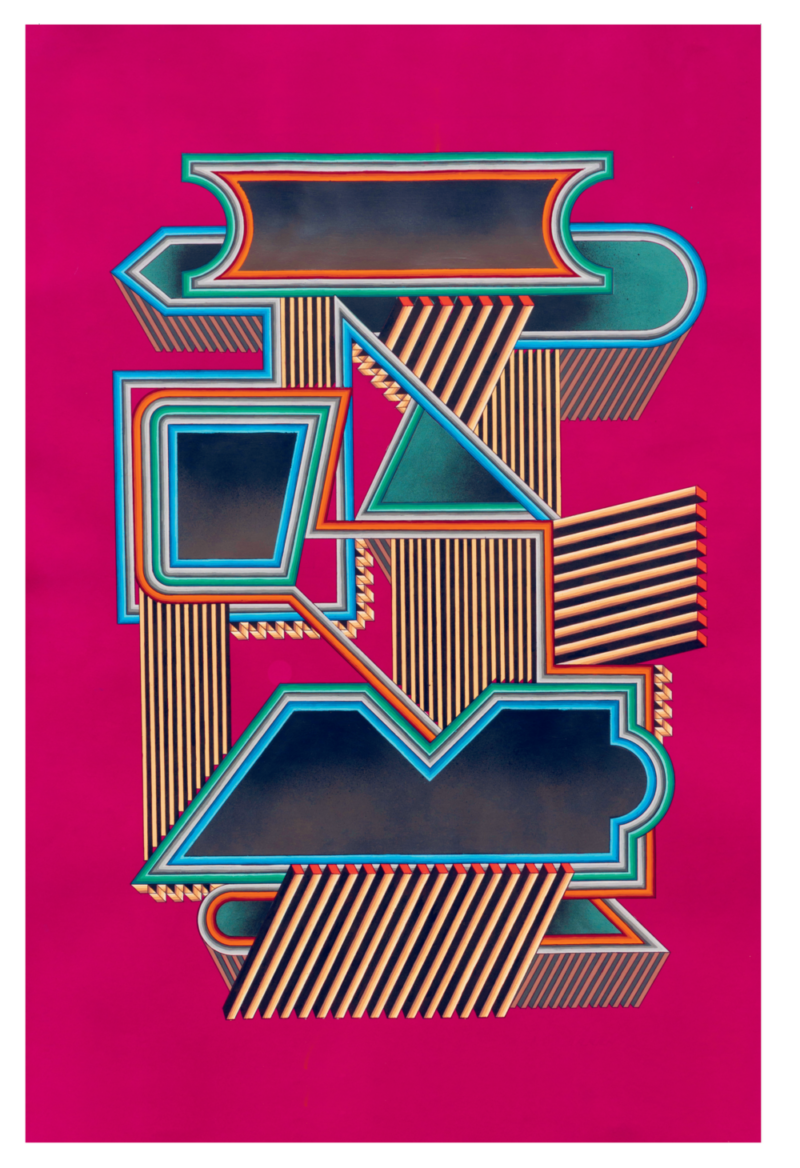
BLVR: There’s one structural element to this issue that just blew me away. The issue starts with a lovely selection of diary entries by ninety-one-year-old essayist and historian Jan Morris. They’re exuberant pieces that nonetheless carry the poignancy of a close awareness of death, and when I first read them I was surprised to find them at the front of the issue, since they seemed the perfect end piece. But then I get to the end and you have this simply amazing story by Ursula K. Le Guin—I think it’s probably a first posthumous publication? At any rate it’s never been published before.
NR: It’s never been published. It was the last Earthsea story she wrote, not long before her death, and it was, as I understand, something of a secret. She had talked with her agent about what to do with it, and they decided to hold off. Then she died. Now it’s being included in a reissue volume in the fall, so they wanted to have it published in anticipation of that. The agent asked if I might be interested in it, and I think I wrote her back within two minutes and said, “Yes, I would like to see it!” She wrote back, “Oh that was very quick.” I’m a huge fan of Le Guin’s, but it’s also a wonderful story apart from my appreciation of her. And it works so perfectly at the end of the issue.
BLVR: Well this is what I wanted to ask about, because this is a story about death. And she’s writing it very close to her own death, and it’s one of the most beautiful stories I’ve read from Le Guin. Then I thought, “Of course Nicole started with Jan Morris,” because that piece places into the air a question and a tone, effectively bookending the issue with these lovely existential meditations from the end of two extraordinary writers’ careers. It’s one of the coolest curatorial moves I’ve encountered and I guess I don’t actually have a question about it except to say that must have been very exciting!
NR: Very exciting. I couldn’t believe my luck with the Le Guin, and the Jan Morris we had, then it fell through, then we got it back again. I always knew I wanted to put Morris at the beginning and Le Guin at the end. They speak to each other from across the issue—two older women, with the balance of their lives and careers behind them, still examining the world, still exercising their imaginations, and still producing first-rate work. The wonderful thing about Morris’s diary entries is that they are a palimpsest—her current life transposed onto her past, on her travels and career as a historian and travel writer. For instance, in one entry she sees the spectacle of India’s Grand Trunk Road, and it turns out to be a memory sparked by her neighbors in Wales bringing their cows back to the farm along the road. And then Le Guin revisiting books she wrote decades ago that clearly never left her. To go back to Ged, the wizard, and to write his death—I can’t quantify how deeply moving that is.
BLVR: There’s an element of luck to it but also a big element of work behind the scenes. You know, I think one of the reasons I wanted to interview you is I don’t think people always understand the degree to which editing can be an art form, and should be an art form. That’s very clear in these two issues, not just because in general you do a lovely job with them, but formally—you’ve got a Spring issue that organizes itself around a center, this portfolio, and then you’ve got a Summer issue that structurally works more in terms of its beginning and its end, and those have such strong magnetic attraction to one another they sort of contain and add energy to everything between them. Of course this is just my reading of the structures of these issues, but the point I would draw from it is that they are two very different ways of thinking about the questions, How do I put an issue together? How does one shape an issue like an art object? And I thought even though we only get two issues from you, it’s kind of wonderful that we get such a range of curatorial energies within that small space.
NR: I’m so glad it feels that way. I feel lucky to have done it.




